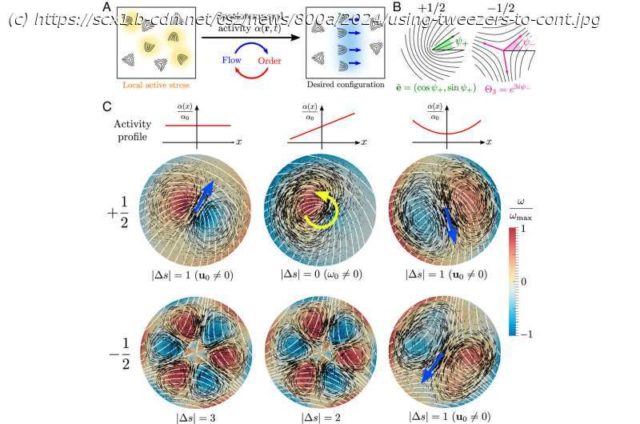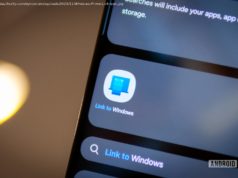University of Michigan physicists have devised a way to manipulate active fluids, a type of fluid composed of individual units that can propel themselves independently, by taking advantage of topological defects in the fluids.
University of Michigan physicists have devised a way to manipulate active fluids, a type of fluid composed of individual units that can propel themselves independently, by taking advantage of topological defects in the fluids.
The researchers showed that they could use tweezers similar to optical tweezers—highly focused lasers that can be used to nudge around atoms and other microscopic and submicroscopic materials—to manipulate the fluids’ topological defects and control how these active fluids flow. The study, led by U-M physicist Suraj Shankar, is published in the Proceedings of the National Academy of Sciences.
You can think of an active fluid like a flock of birds, says Shankar. In a murmuration, an enormous cloud of starlings, birds will twist and turn in unison, making shapes of the cloud. But while the murmuration looks like it’s moving as one organism, the movement is made of individual birds powered by their individual sets of wings.
Similarly, active fluids are composed of individual components like bacteria in water or atoms in a crystal, but each unit moves on its own if shone with light or given « food » via a chemical reaction, according to Shankar. Researchers have previously engineered bacteria so that when they shine light on the bacteria, some bacteria in the liquid swim faster and others swim slower.
« And you can change that pattern as you want. By changing the speed at which the bacteria swim locally, you can paint faces of famous people, or change it and make a landscape, » said Shankar, an assistant professor of physics at U-M.
« Given that these experimental platforms exist and we’re now able to manipulate these materials by controlling the speed by which things are moving around, we asked: Can we develop a framework in which we can control the local speeds of things that comprise active fluids so that we can control them in a systematic way? »
The research team also includes co-authors Cristina Marchetti and Mark Bowick of the University of California Santa Barbara and Luca Scharrer, who conducted much of the research as an undergraduate at UCSB.
Home
United States
USA — IT Researchers show how to use 'topological tweezers' to control active fluids






